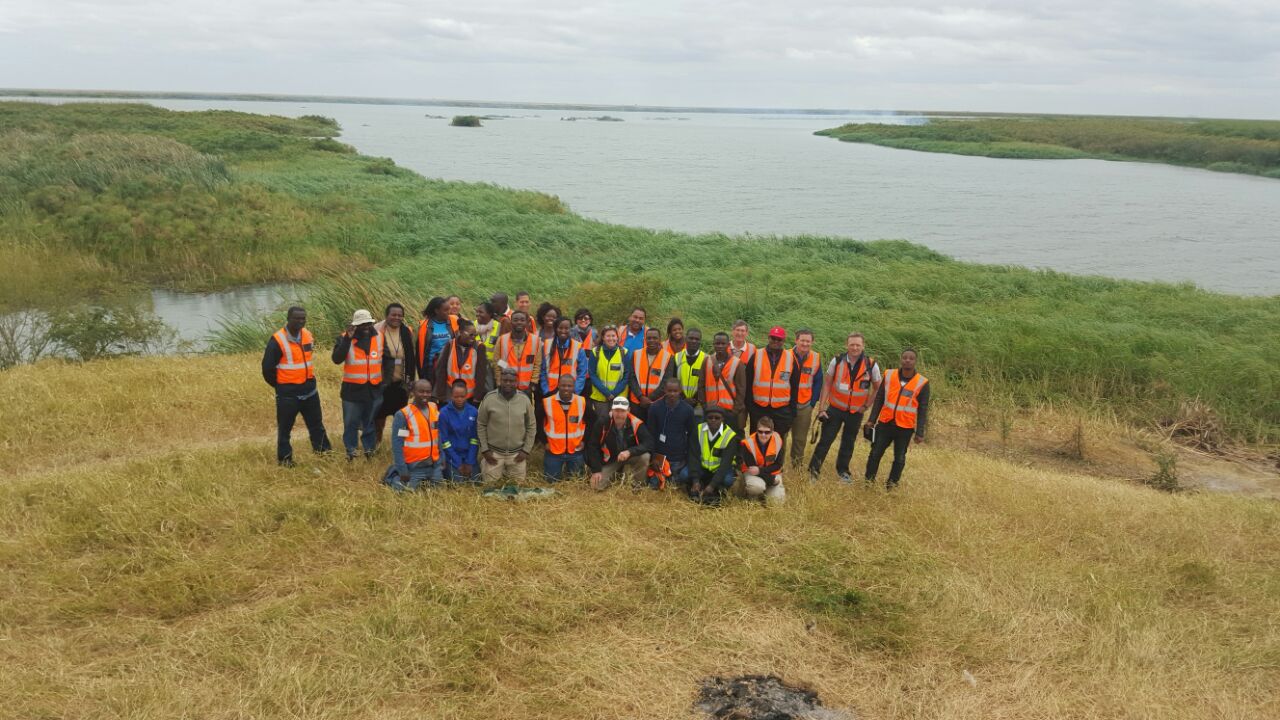
The 2016 Insaka International Symposium – jointly organised by the International Water Security Network (IWSN) and the Insaka Consortium – took place in Kafue, Zambia from 13-16 June on the theme: ‘Ecosystem benefits and water security.’ It was organised to galvanise efforts for productive collaboration, to foster interaction on issues around natural resource security (particularly, but not restricted to, water), carry out research, and to show the necessity of linking equitable access and sustainability of good natural resource governance. The event brought together over 37 presentations from partner universities, research centres and practioners, including South Africa National Parks (SanParks) and World Wide Fund for Nature (WWF).

The conference began with a well organised tour of a Zambia Sugar Company sugar cane plantation, located on the Kafue Flats. This was an opportunity to see water utilisation and efficiency on a commercial scale and to share lessons from other countries, including South Africa, where sugar cane plantations are very dominant in the northern region. It provided a good example of the challenges and opportunities of water stewardship on a productive resource. The conference participants had a chance to engage with other water users in the basin, including Zambia Electric Supply Corporation (ZESCO) and how it is responding to low water levels emanating from the drought that hit the Southern Africa region.

(Zambia Electricity Company), and S. Siachoono (Copperbelt University).
In typical Insaka fashion, the conference provided an opportunity to interrogate water issues from both an industry and a research perspective, as participants considered the realities of water resource issues faced by the productive and conservation sectors. With the limited institutional capacity and presence of the Water Resources Management Authority (WARMA) consequently creating a governance vacuum, collective action among industry players through social advocacy is a critical and legitimate governance mechanism.
It was noted no actor is neutral in any collective action – even regulators or the government have vested interests in benefit sharing arrangements. As a non-state actor, WWF has been trying to facilitate and coordinate common platforms for collective action through the Water Stewardship Program. Capacity building and continuous effective stakeholder engagement is essential to improve water security in the Kafue River Basin.
In conclusion, the delegates held a planning session on the last day of the conference in which issues of possible future collaboration, fundraising, and the continued nature of Insaka and IWSN after the first phase were discussed. Some of the important questions raised by delegates revolved around how the different focus of IWSN (water security) and Insaka (benefit sharing) talk to each other? Are there possible synergies in the two? If so, how can collaboration be enhanced in the long-term?
The Insaka Consortium is composed of University of KwaZulu Natal; Copperbelt University; University of Namibia; Monash South Africa; and the University of Montana. Insaka (meaning ‘meeting place’) is a community of practice that seeks to strengthen existing capacity and share understanding of the dynamics and complexities of governing and sharing benefits accruing from ecosystems.
Special thanks to the organising committee: George Kampamba (Copperbelt University), Bimo Nkhata (Monash South Africa), Chad Staddon (IWSN Director, University of the West of England) and Wayne Freimund (University of Montana).
(All photos: Binganidzo Muchara)
